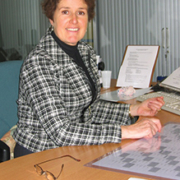ASD: a diagnosis to be sniffed at?
The complex neurodevelopmental condition autism spectrum disorder (ASD), now considered to be one of the most heritable of all neuropsychiatric conditions, is characterized by impaired communication skills and difficulties interacting socially together with limited and repetitive behaviour patterns. It has been suggested that the dramatic increase in the number of reported cases in recent decades- one out of 68 children in the US has been diagnosed with the condition- is largely the result of changes in how and when ASD is diagnosed as well as increased public awareness. Indeed a study reported in JAMA Pediatrics last year that followed 677,915 children born in Denmark from 1980 up to 1991 concluded that 60 percent of the increase in ASD prevalence could be attributed to changes in diagnostic methods, though as yet unidentified environmental risk factors could also be contributing to the rise.
So far there are no clinical lab tests available to facilitate diagnosis of ASD in spite of extensive research on the elevated levels of neurotransmitters such as 5-hydroxytryptamine and GABA, as well as the hormonal markers dopamine and oxytocin, found in many people affected. Studies have also focused on the potentially higher levels of inflammatory cytokines and autoantibodies, and the identification of target genes and epigenetic changes from gene-environment interactions in people with ASD. Neuroimaging has also identified activation deficits in certain areas of the brain. But currently diagnosis still relies on developmental screening followed by comprehensive (and costly) evaluation if indicated, a challenging approach for the healthcare workers involved since many of the symptoms mirror those found in other developmental disorders.
But ASD can be managed once the condition is diagnosed, so early and effective screening is essential. Appropriate and timely behavioural and speech therapy to improve learning, communication and social skills (as well as drug therapy in some cases) greatly improves the quality of life for those affected. And in July this year an exciting, if preliminary, study based on the sniff response to odours was published. Eighteen children with ASD and 18 matched controls were given both pleasant and unpleasant odours to smell and the changes in breathing patterns were recorded. Whereas pleasant or mild smells elicited a high-magnitude sniff and unpleasant odours one of low magnitude in the controls, the children with ASD sniffed the odours with equal magnitude. Could this simple low cost test eventually allow early effective screening for ASD or at least provide an additional testing tool in children who cannot communicate verbally?



